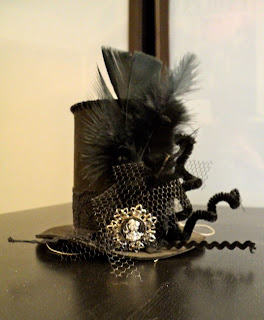I've made a couple then I put my own tweaks on it to make it easier for me.
What you will need:
felt
scissors
needle and thread (to match, optional)
The cutting of the felt:
I used some freezer paper to cut out the felt.
Cut out about 5 circles of the same size.
I cut out two different sizes just to play around.
I found the larger the petals, the easier it was to hold. But after a few of the smaller ones, those became easier too.
Make sure that you have the end of the thread in a very thick knot so the thread doesn't pull all the way though. I tied mine about fours times around.
The assembly:
After you cut out the circle fold in half as shown.
Then stack all five folded circles nice and neat together.
Take the needle and push it through one end of the half circles. The next picture shows the placement of the needle better.
Then fan out to resemble a flower.
As you do so, it may give you a little trouble to stay looking like a flower. (the first couple of flowers really tried my patience) I found that just playing with the placement of the petals before and while you are sewing will help get the best results.
I also found that gripping the flower like pictured helped with the petal placement. Then I wove the needle and thread through all the petals again and pulled thread taunt for the flower to hold its shape.
Next, tie a knot or two to finish off the flower. And you're done!
The first one is very flat. The second starting to show the curve of the petals.
Practice makes perfect!

















































